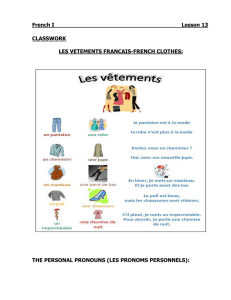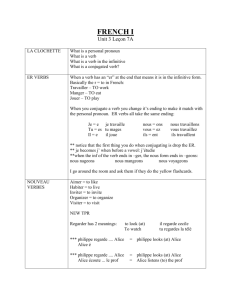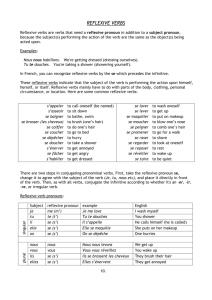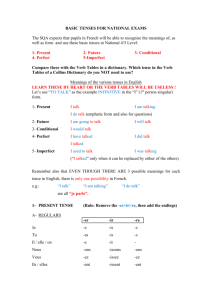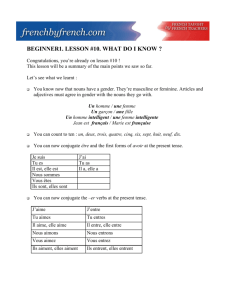Les pronoms le, la, les me, te, nous, vous
advertisement
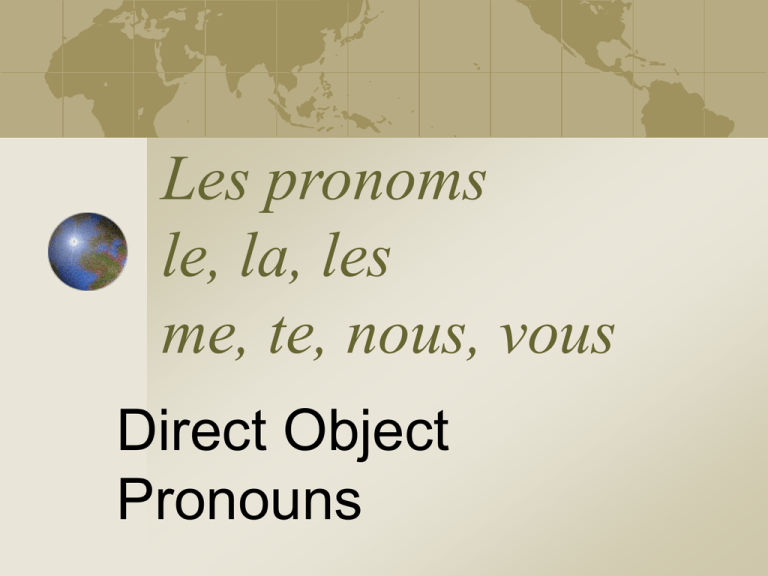
Les pronoms le, la, les me, te, nous, vous Direct Object Pronouns D.O. Pronouns Le - it , him (masculine object or male) La - it, her (feminine object or female) Les - them (masculine or feminine objects or people) ** Le and La become L’ in front of a vowel or silent H Examples Je vois le film. --> Je le vois. I see the film. I see it. Je ne connais pas la vedette. --> Je ne la connais pas. I don’t know the star (actress). I don’t know her. J’admire les costumes. --> Je les admire. I admire the costumes. I admire them. Telling what you do for others and what others do for you Me - me Te - you Nous - us Vous -you guys (ya’ll) Examples Le médecin te voit? Oui, il me voit. Does the doctor see you? Yes, he sees me. Il vous parle? Oui, il nous parle. Does he talk to you guys? Yes, he talks to us. Les règles Direct Object Pronoun Receives the action of the verb Can replace people or things Answers the question what? Or who? Placement Usually is placed immediately before the conjugated form of the verb Elle le regarde. Placement Exception In a sentence with a conjugated verb + an infinitive (va aimer), the pronoun comes before the infinitive. (Elle va l’aimer.) Negation Still comes right before the verb Cannot be separated from the verb by a negative word Elle ne le regarde pas. Il ne nous examine pas. Practique I see him. Je le vois. She talks to us. Elle nous parle. We invite them. Nous les invitons. Are you going to see her? (Tu) Tu vas la voir?



